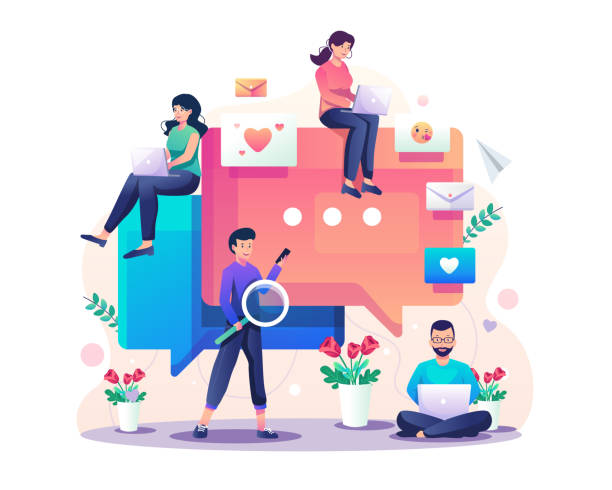Why Every Business Needs Corporate Website Design
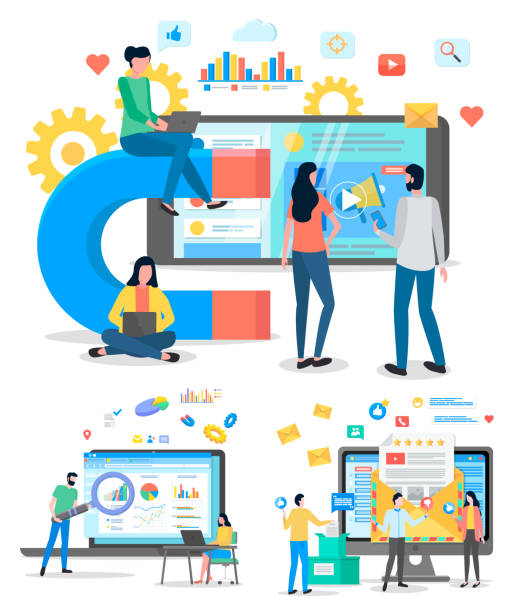
In the present era, where everything is moving towards digitalization, having a powerful online presence is not just a competitive advantage, but an undeniable necessity for every business.
From startups to large organizations, the need for #Corporate_Website_Design for effective communication with customers, offering services, and introducing products is felt more than ever.
Have you ever wondered why some businesses perform more successfully in the online world? A significant part of this success depends on the quality and efficiency of their #Corporate_Website.
A corporate website is the first point of contact for many potential customers with your brand.
This website not only acts as a 24-hour virtual office but also shapes your brand identity and increases your credibility in the digital market.
Imagine a customer looking for services or products you offer; if you don’t have an online presence or your website is old and unprofessional, you will simply lose countless opportunities.
A professional corporate website design provides access to complete information about the company, its history, products, services, and contact methods.
This transparency and easy access build customer trust and help them make more informed decisions.
Furthermore, a corporate website allows you to discover new markets and operate beyond geographical boundaries.
Your website can be a powerful tool for content marketing, lead generation, and even direct sales.
Also, by using web analytics tools, you can monitor user behavior and optimize your marketing strategies.
This information helps you understand the real needs of your audience and produce content that is truly valuable to them.
So, ignoring the importance of corporate website design and development in today’s world means ignoring the potential for growth and development of your business.
This is an investment for the future that will have a significant return on investment.
Without a strong digital presence, your business may get lost among your online competitors.
This website is a platform for publishing news, articles, and events related to your company and can strengthen your communication with customers and stakeholders.
Are visitors to your e-commerce site leaving before purchasing? Don’t worry anymore! With Rasaweb’s professional e-commerce website design services, solve the problem of not converting visitors into customers forever!
✅ Significantly increase conversion rates and sales
✅ Unparalleled and attractive user experience
⚡ Contact us now for a free consultation!
From Idea to Execution: Essential Steps in Corporate Website Design

The process of corporate website design is a step-by-step journey that continues from initial ideation to launch and maintenance.
The first step is defining your business goals and needs.
Before anything else, you must clearly specify what you expect from your website.
Is the main goal brand introduction, or selling products, providing services, customer support, or a combination of these? Understanding the target audience is also crucial at this stage.
Who the website is designed for directly affects its design and content.
The next step is competitor research and analysis.
By examining successful competitor websites, you can learn from their strengths and weaknesses and gain new ideas for your own website design.
After that, it’s time to design the website structure and sitemap.
This stage includes planning for different pages, how they are linked, and the overall user flow on the site.
Then we enter the graphical design (UI Design) and user experience (UX Design) phase.
In this section, the visual appearance of the website, including color schemes, fonts, images, and element layout, is designed, with a focus on ensuring users can easily and enjoyably interact with the site.
After the design is approved, the development and coding phase begins.
In this phase, graphical designs are converted into executable code (HTML, CSS, JavaScript) and the site’s functionality is implemented using server-side programming languages (like PHP, Python, Node.js) and databases (like MySQL).
Using a Content Management System (CMS) such as WordPress or Joomla can simplify content management after design.
One of the very important aspects at this stage is responsiveness (Responsive Design).
Your website should display well on mobile, tablet, and desktop.
After development is complete, it’s time for comprehensive testing and debugging.
At this stage, all functions, links, forms, and browser compatibility are checked to ensure the website works flawlessly.
Content entry is also an inseparable part of this process; it includes writing engaging and SEO-optimized texts, uploading high-quality images and videos.
Finally, after final approval, the website is uploaded to the server (host) and the domain is connected to it to become publicly accessible.
This structured approach to corporate website design ensures a high-quality and efficient output.
Features of a Successful Corporate Website Design
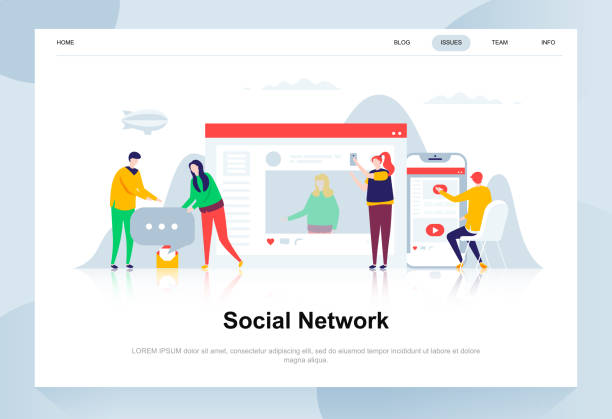
A successful corporate website design goes beyond a beautiful appearance; this website must be functional, efficient, and aligned with business goals.
One of the most important features is responsiveness (Responsive Design).
In today’s world, where a large portion of web traffic comes from mobile devices, your website must be fully compatible with various screen sizes.
This means that regardless of whether the user is using a smartphone, tablet, or desktop computer, the website should display correctly and optimally, providing a consistent user experience.
Another feature is high loading speed.
Today’s users are impatient, and a slow website can quickly lead to losing visitors.
Image optimization, caching, and optimized coding are important factors in increasing site speed.
Also, user-friendly design and easy navigation are of paramount importance.
Users should be able to easily find the information they need.
Menus should be clear, logical, and accessible, and the path to any section of the site should be clearly defined.
High-quality and updated content plays a fundamental role in attracting and retaining users.
Content should not only provide useful information but also be engaging, readable, and SEO-optimized to rank well in search engines.
Regular use of blogs, articles, and news can help maintain the dynamism and freshness of your website’s content and enhance your credibility as an authority in your field.
Website security is a critical feature.
Using an SSL certificate, regular updates of systems and plugins, and regular data backups are essential for protecting user data and preventing cyberattacks.
SEO compatibility (SEO-Friendly) should also be incorporated into the corporate website design process from the very beginning, so your website can be easily indexed and ranked by search engines.
Contact forms, clear calls-to-action (CTAs), and the ability to integrate with social networks also contribute to increasing website interaction and success.
Finally, analytics and reporting capabilities are highly important so you can track website performance and make necessary improvements.
These capabilities allow you to gain a deeper understanding of user behavior and adjust your marketing and content strategies based on real data.
For a corporate website looking for growth and development, all these features must be considered to provide a strong and effective platform for the business’s online presence.
| Key Feature | Importance Description |
|---|---|
| Responsiveness | Ensuring correct display on all devices (mobile, tablet, desktop) for a seamless user experience. |
| High Loading Speed | Preventing user abandonment due to slow site and improving SEO ranking. |
| Easy Navigation | Helping users quickly find information and reducing bounce rate. |
| High-Quality & Updated Content | Increasing brand credibility, attracting visitors, and improving SEO. |
| Website Security | Protecting company and user information from cyberattacks. |
| SEO Compatibility | Ensuring the website is visible in search results and increasing organic traffic. |
The Importance of User Experience (UX) and User Interface (UI) in Corporate Website Design
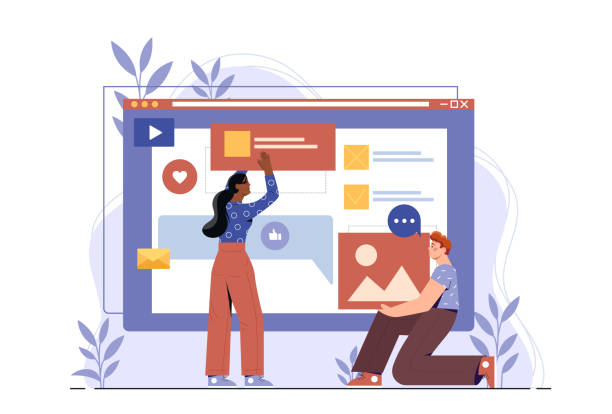
In today’s competitive world, where hundreds of websites compete for users’ attention, User Experience (UX) and User Interface (UI) are two fundamental pillars of success for a corporate website design.
User Interface (UI) refers to the visual appearance of the website; including colors, fonts, images, icons, buttons, and all graphical elements with which the user interacts.
A beautiful and eye-catching UI can make the first positive impression on the user and convey a sense of professionalism and credibility.
But beauty without functionality is meaningless, and this is where User Experience (UX) comes in.
UX addresses the user’s entire experience when using your website; from the moment they enter the site until they achieve their goal, such as filling out a contact form or purchasing a product.
This includes ease of navigation, page loading speed, logical arrangement of information and even the user’s emotional feeling while interacting with the site.
A strong UX means that the website not only looks beautiful but is also simple, enjoyable, and hassle-free to use.
In fact, good UI attracts users to your website, and good UX keeps them on the site and turns them into loyal customers.
For example, if a website has a very stylish appearance (excellent UI), but the user cannot easily find the main menu or its forms encounter errors (poor UX), they will quickly leave the site.
Focusing on UX in corporate website design means a deep understanding of your users’ needs and behaviors.
This includes conducting user research, creating user personas, designing customer journeys, and usability testing.
The ultimate goal is for every interaction with the website, to be positive and efficient for the user.
A website with excellent UX has a higher conversion rate, increases customer satisfaction, and directly impacts your company’s online credibility and success.
Investing in professional UX/UI design for corporate websites, means investing in attracting and retaining customers and, ultimately, sustainable business growth.
Remember that your website is your company’s online representative and shapes users’ first impression of your brand.
A poor UX/UI design can quickly damage your credibility, while a strong and well-thought-out design, can differentiate you from competitors.
Did you know that customers’ first impression of your company is your website? With a powerful corporate website from Rasaweb, multiply your business’s credibility!
✅ Custom and eye-catching design tailored to your brand identity
✅ Improved user experience and increased customer attraction
⚡ Contact us for a free consultation!
How SEO and Corporate Website Design Align
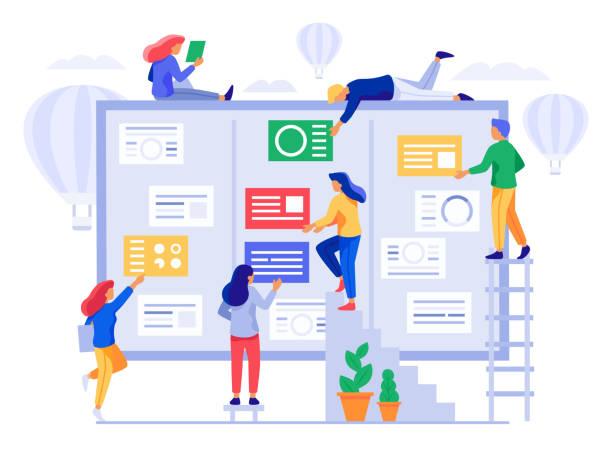
Search Engine Optimization (SEO) and corporate website design are two sides of the same coin that must be perfectly aligned for a business’s online success.
The goal of SEO is to increase your website’s visibility in search engine results like Google, so that when relevant keywords to your business are searched, your website appears in the top rankings.
This means attracting organic and free traffic to your site, which can significantly increase your conversion rates and sales.
From the very first stages of corporate website design, SEO principles must be considered.
This work means choosing the right URL structure, correctly using heading tags (H1, H2, H3), optimizing images with alt tags, and ensuring high loading speed.
A website that is designed from the ground up with SEO principles in mind, will have a smoother path to achieving high search engine rankings.
Ignoring SEO during the design phase, can lead to costly revisions in the future.
For example, if the internal link structure of the site is not designed correctly, search engine crawlers (Crawlers) cannot easily index all your pages.
Producing high-quality and SEO-optimized content is also an inseparable part of this synchronization.
Content should contain keywords relevant to your business, but not in a way that appears unnatural (Keyword Stuffing).
Useful and valuable content that answers user questions, is not only loved by search engines, but also attracts and retains users.
Using structured data (Schema Markup) can also help search engines better understand your content and display it in richer formats (Rich Snippets).
User Experience (UX), which we discussed in the previous section, also has a direct impact on SEO.
Google prioritizes websites that offer a good user experience.
Low bounce rate, high dwell time on the site, and a good click-through rate (CTR), are all signs of a strong UX that help SEO.
Therefore, when you focus on improving your corporate website’s user experience, you are simultaneously helping its SEO.
Finally, internal and external link building are also important SEO activities that should be considered alongside website design.
Internal links help organize site content and improve crawling, while external links (Backlinks) from reputable websites, increase your site’s credibility in the eyes of search engines.
All these elements in conjunction, form a comprehensive SEO strategy for corporate website design that will lead to your online visibility and success.
Choosing the Best Platform for Your Corporate Website Design
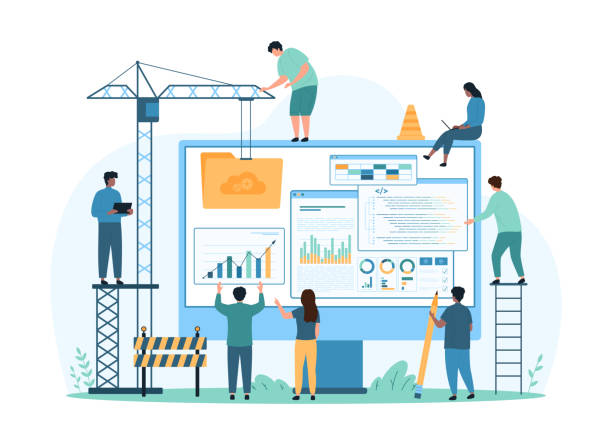
Choosing the right platform for corporate website design is one of the key decisions that will significantly impact the flexibility, scalability, and maintenance costs of your website in the future.
Various platforms with different capabilities and features are available in the market, each with its own advantages and disadvantages.
One of the most popular options is ready-made Content Management Systems (CMS) like WordPress.
WordPress is considered the first choice for many businesses, especially SMEs, due to its ease of use, wide range of available plugins and themes, and large user community.
This platform allows for the creation of a corporate website with diverse features, from blogs and introductory pages to advanced contact forms.
With this, the need for regular maintenance, updates, and attention to security is one of its challenges.
Other options include Joomla and Drupal, which are more complex than WordPress but are more suitable for larger websites with more customized needs.
Drupal is especially recommended for complex organizational websites with high-security requirements.
For companies that need complete control over their website’s code and functionality, custom website development using frameworks like Laravel, Django, or ReactJS and NodeJS can be the best choice.
This approach provides infinite flexibility but is usually more expensive and time-consuming and requires a specialized development team.
Platform selection should be based on your current and future business needs, budget, internal team’s ability to manage the website, and your marketing goals.
Do you need an online store? Will your content volume be very large? Do you need complex integrations with other systems? Answering these questions will help you choose the right option.
Consulting with a company specializing in corporate website design can be very helpful at this stage, as they can, based on their experience, suggest the best solution for you and consider all technical and commercial aspects.
Also, considering the scalability of the platform for future business growth and ease of updates and adding new features, are among other important considerations.
Security and Maintenance After Corporate Website Design

After completing corporate website design and launching it, your work is not over.
Instead, you enter a new and vital phase of website security and maintenance.
An insecure or neglected website can quickly become a target for cyberattacks, which not only leads to data loss and site disruption but also severely damages your credibility and customer trust.
The first step in security is using an SSL certificate (HTTPS).
This certificate not only encrypts information between the user and the server and increases data transfer security, but also helps improve your SEO ranking in search engines.
Regular updates of the Content Management System (CMS), themes, and plugins are also of high importance.
Developers continually release updates to fix security vulnerabilities and improve performance.
Failing to apply these updates makes your site vulnerable to new threats.
Regular backups of website data are a critical preventive measure.
In the event of any security issue, human error, or server crash, having an up-to-date backup allows you to quickly restore your site to normal.
These backups should include files, databases, and all vital information, and be stored in a secure, separate location.
Using strong and unique passwords for all user accounts, and enabling two-factor authentication (Two-Factor Authentication) if possible, are other basic security measures.
Continuous monitoring of website activities to identify suspicious patterns and potential attacks is also essential.
This includes reviewing server logs and using security tools and a web application firewall (WAF).
Performance optimization is also part of maintenance; ensuring appropriate loading speed and website efficiency improves user experience and also affects SEO ranking.
A reputable corporate website design company usually offers support and maintenance services after the website launch, which can ease your mind about the website’s security and stability.
Ignoring these aspects after investing in building an organizational website, means wasting that investment and jeopardizing your business’s online presence.
| Security/Maintenance Action | Why it’s important? |
|---|---|
| Install SSL/HTTPS | Encrypts data, increases user trust, improves SEO. |
| Regular CMS and Plugin Updates | Fixes security vulnerabilities, benefits from new features. |
| Regular Backups | Rapid website recovery in case of issues. |
| Use Strong Passwords and 2FA | Prevents unauthorized access to the admin panel. |
| Monitor Logs and Traffic | Rapid identification of attacks and suspicious activities. |
| Performance Optimization | Increases site speed and improves user experience. |
Digital Transformation and the Role of Corporate Website Design in It
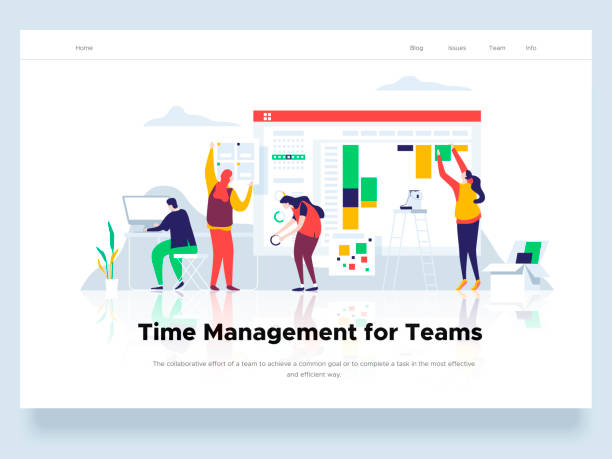
Digital transformation is no longer just an option, but a necessity that forces businesses to redefine how they operate, interact with customers, and create value.
In this evolving landscape, corporate website design plays a pivotal role, serving as a gateway for companies to enter the digital realm.
A website is no longer just an online brochure; it’s a comprehensive platform for implementing digital transformation strategies.
This transformation involves changes in business processes, revenue models, organizational culture, and customer experience through the adoption of digital technologies.
A modern and efficient corporate website can serve as a platform for providing online services, customer portals, sales platforms, and even a space for collaboration with partners and employees.
For example, companies that offered traditional services can now provide digital services through their websites (such as online consultations, appointment bookings, or selling training courses), thereby reaching new markets and reducing their operational costs.
Digital transformation means leveraging data for better decision-making, and a corporate website is a powerful tool for collecting this data from user behavior.
By analyzing this data, companies can better understand their customers’ needs and develop their products and services based on actual market demand.
This website can also play a key role in automating business processes; from online forms and Customer Relationship Management (CRM) systems to chatbots that answer frequently asked questions.
These automations not only increase efficiency but also improve the user experience.
The use of Artificial Intelligence (AI) and Machine Learning (ML) in websites, such as suggesting personalized products or improving search functionality, is also part of this transformation that turns a corporate website from a static tool into a dynamic and intelligent platform.
Therefore, corporate website design is no longer just about having an online address; it’s about creating a digital ecosystem that can propel your organization along the path of digital transformation and prepare it for future challenges and opportunities.
A good website helps you connect with your customers in a new and meaningful way, optimize your internal processes, and ultimately become a leading business in the digital age.
This investment is not just an expense for a tool but a long-term strategy for survival and growth in today’s competitive market.
Does your current website build the trust that potential customers should have in your business? If the answer is no, it’s time to have your professional and impactful corporate website with Rasaweb.
✅ Fully custom design tailored to your brand identity
✅ Increased lead attraction and business credibility in the eyes of customers⚡ Contact us for a free consultation!
Costs and Investment in Corporate Website Design
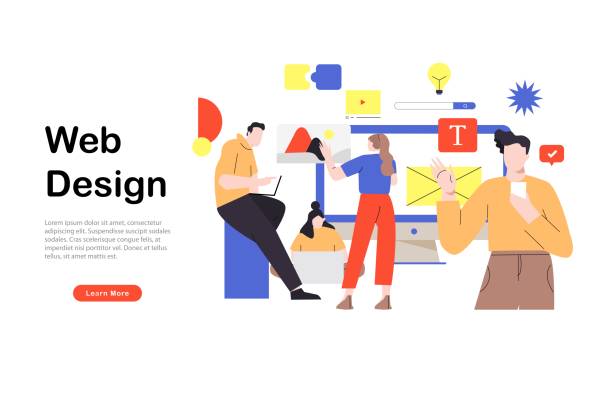
One of the most important questions that arises at the beginning of the corporate website design journey relates to the costs and necessary budget for this work.
The idea that designing a professional corporate website is just an expense is a big mistake.
In fact, it’s a long-term investment that will bring a significant return on investment (ROI), provided it’s done correctly.
Corporate website design costs can vary widely and depend on several factors:
- Complexity and Required Features: A simple single-page or multi-page website with basic information, is significantly cheaper than a complex corporate portal with a custom content management system, CRM features, or integration with ERP systems.
The more pages, features, and need for dedicated modules, the higher the cost. - Custom Design vs. Ready-made Templates: Using ready-made templates (Themes) in CMS like WordPress, reduces design costs.
However, if a unique and completely custom design tailored to your brand is needed, the cost of graphic design and coding from scratch will be higher. - Design Team Experience: Choosing an experienced and specialized corporate website design company will naturally have a higher cost compared to a freelancer or nascent companies.
However, quality, support, and project completion speed also increase with experience. - Content Production and SEO: Writing SEO-optimized content, professional photography, and video production for the website, all have separate costs that affect the quality and visibility of the site.
- Hosting and Domain: Annual costs for hosting (web hosting space) and domain registration (website address) should also be included in the budgeting.
Choosing a reliable and high-speed host is essential for a corporate website. - Support and Maintenance: After launch, the website needs technical support, security updates, and sometimes new feature additions, which also incur monthly or annual costs.
To determine the budget, you should first define your goals and then consult with a few reputable companies to get proposals and prices from them.
Keep in mind that the initial investment in a quality website, can yield multiple returns in the future by increasing sales, reducing traditional marketing costs, and improving brand credibility.
A poor website chosen merely for its low cost, may harm your business in the long run.
The Future of Corporate Website Design and New Trends
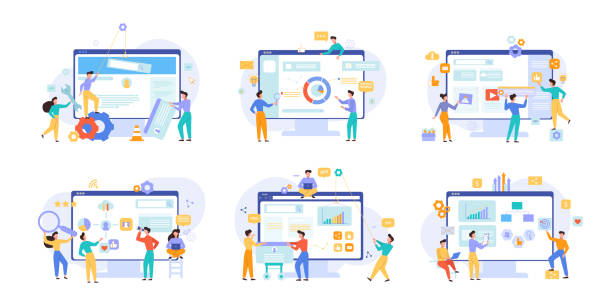
The digital world is rapidly changing, and corporate website design is no exception.
New trends and advanced technologies are shaping the future of this industry, and companies must align themselves with these changes to remain competitive.
One of the most important trends is Artificial Intelligence (AI) and Machine Learning (ML).
In the future, corporate websites will become smarter.
AI-powered chatbots capable of answering more complex questions and providing 24/7 support will become a standard.
Also, websites will use ML for Personalization; meaning content, products, and services will be displayed based on the user’s previous behavior and interests, which will lead to increased conversion rates and customer satisfaction.
Augmented Reality (AR) and Virtual Reality (VR) are also finding their place on websites.
Companies can use AR to showcase their products in the user’s real environment (e.g., displaying furniture in the customer’s living room) or provide virtual tours of their offices and factories, which elevates the user experience to an unprecedented level.
Voice Search and Voice User Interfaces (VUI) are also growing.
With the increasing use of voice assistants like Siri and Google Assistant, websites need to be optimized to respond to voice queries.
This means a change in how content and keywords are structured.
Immersive UX, where interaction with the website gives the user a sense of immersion and presence in an environment, is also becoming a trend.
This includes the use of advanced animations, background videos, and 3D Design.
Sustainability and Accessibility will also be important considerations in the future of corporate website design.
Websites should be designed to consume less energy and be accessible to people with disabilities.
This topic not only contributes to corporate social responsibility but also expands market access.
Finally, Progressive Web Apps (PWA), which provide a mobile app-like user experience in the browser and also have offline capabilities, will shape the future of web applications.
For companies that want to be leaders in the digital world, investing in corporate website design that embraces these new trends is a necessity.
Frequently Asked Questions
| Question | Answer |
|---|---|
| 1. What is corporate website design? | Designing a dedicated website to introduce a company, its products, services, history, and contact methods to online audiences. |
| 2. Why does a company need a website? | Increased credibility and branding, 24/7 access to company information, attracting new customers, reducing marketing costs, and providing better services. |
| 3. What are the most important sections of a corporate website? | Homepage, About Us, Services/Products, Contact Us, News/Articles (Blog), and sometimes Careers or Portfolio. |
| 4. Why is website responsiveness important for a corporate site? | A responsive website displays correctly on any device (mobile, tablet, laptop) and provides a better user experience, which is also beneficial for SEO. |
| 5. What is the role of SEO in corporate website design? | SEO helps the company’s website achieve higher rankings in search engine results like Google and attract more visitors. |
| 6. What does security mean in a corporate website and why is it important? | Security includes protecting company and user information from cyberattacks, malware, and unauthorized access, which is vital for maintaining trust and preventing damage. |
| 7. What type of content is suitable for a corporate website? | Professional and engaging content including texts introducing services/products, high-quality images, explanatory videos, industry-related articles, and testimonials. |
| 8. What is a Content Management System (CMS) and why is it useful for a corporate site? | CMS is a system like WordPress that allows managing and updating website content without needing programming knowledge. |
| 9. Why is corporate website loading speed important? | High speed improves user experience, reduces bounce rate (visitors don’t leave the website) and positively impacts search engine ranking. |
| 10. What are the main steps in designing a corporate website? | Includes planning and needs analysis phase, UI/UX design (interface and user experience), coding and implementation, testing and launch, and then ongoing support and updates. |
And other services of Rasaweb Advertising Agency in the field of advertising
Smart SEO: A novel service for increasing user engagement through attractive UI design.
Smart Digital Advertising: Designed for businesses seeking online growth through attractive UI design.
Smart SEO: A professional solution for increasing sales with a focus on precise target audience targeting.
Smart Marketplace: Designed for businesses looking to manage campaigns by utilizing real data.
Smart Customer Journey Map: Revolutionize campaign management with the help of intelligent data analysis.
And over hundreds of other services in the field of internet advertising, advertising consultation, and organizational solutions
Internet Advertising | Advertising Strategy | Advertorial
Sources
- Corporate Website Design – Webram
- What is Corporate Website Design? – ParsPack
- Professional Corporate Website Design – RayaSite
- Corporate Website Design in Isfahan – SibSite
? With Rasaweb Afarin Digital Marketing Agency, transform your business in the digital world. By providing comprehensive services including SEO, content marketing, and multilingual website design, we pave the way for your growth and success. For a free consultation and to learn more about our solutions, contact us today and shape the bright future of your business.
📍 Tehran, Mirdamad Street, next to Bank Markazi, Kazerun Jonubi Alley, Ramin Alley, No. 6

